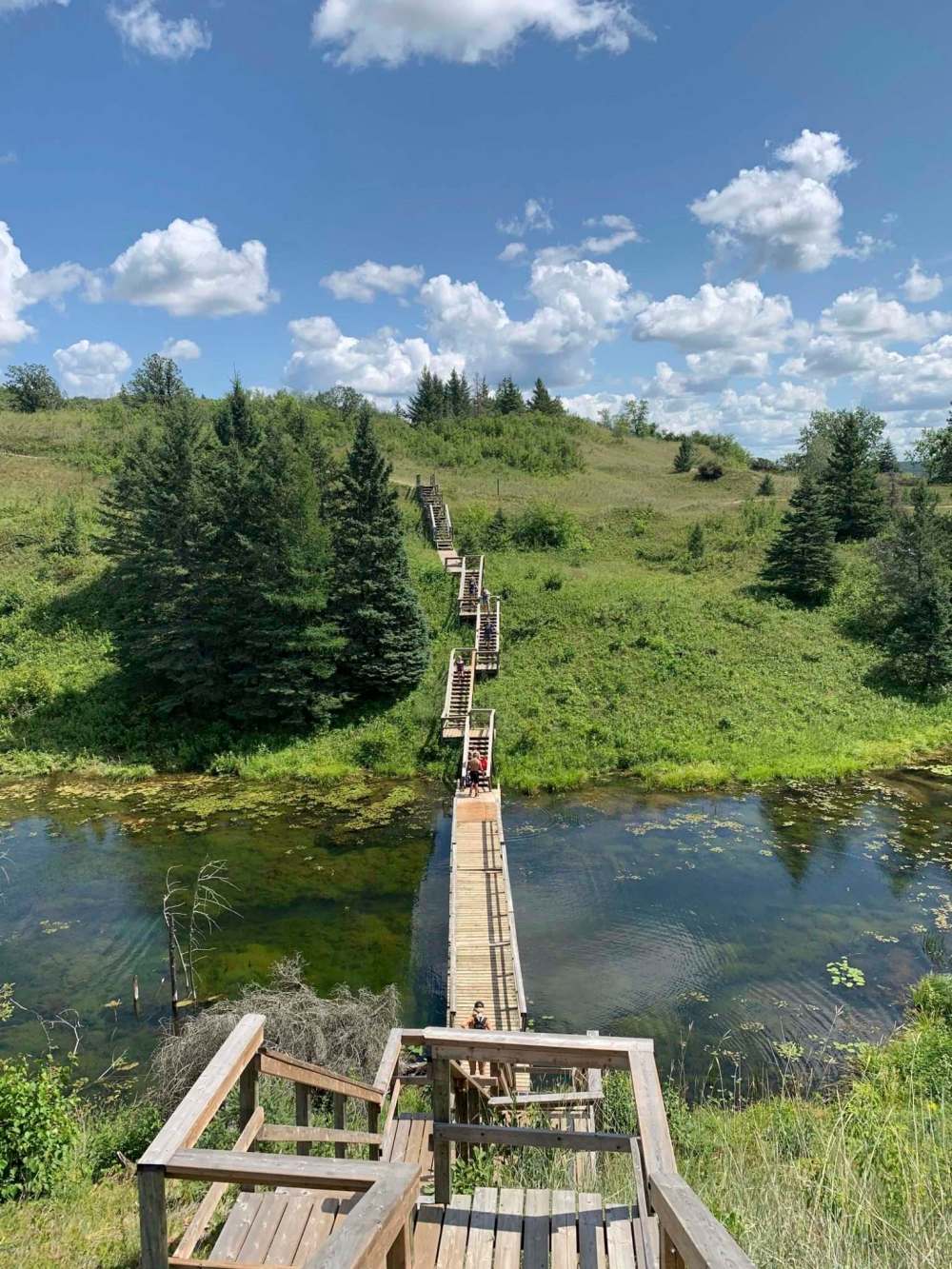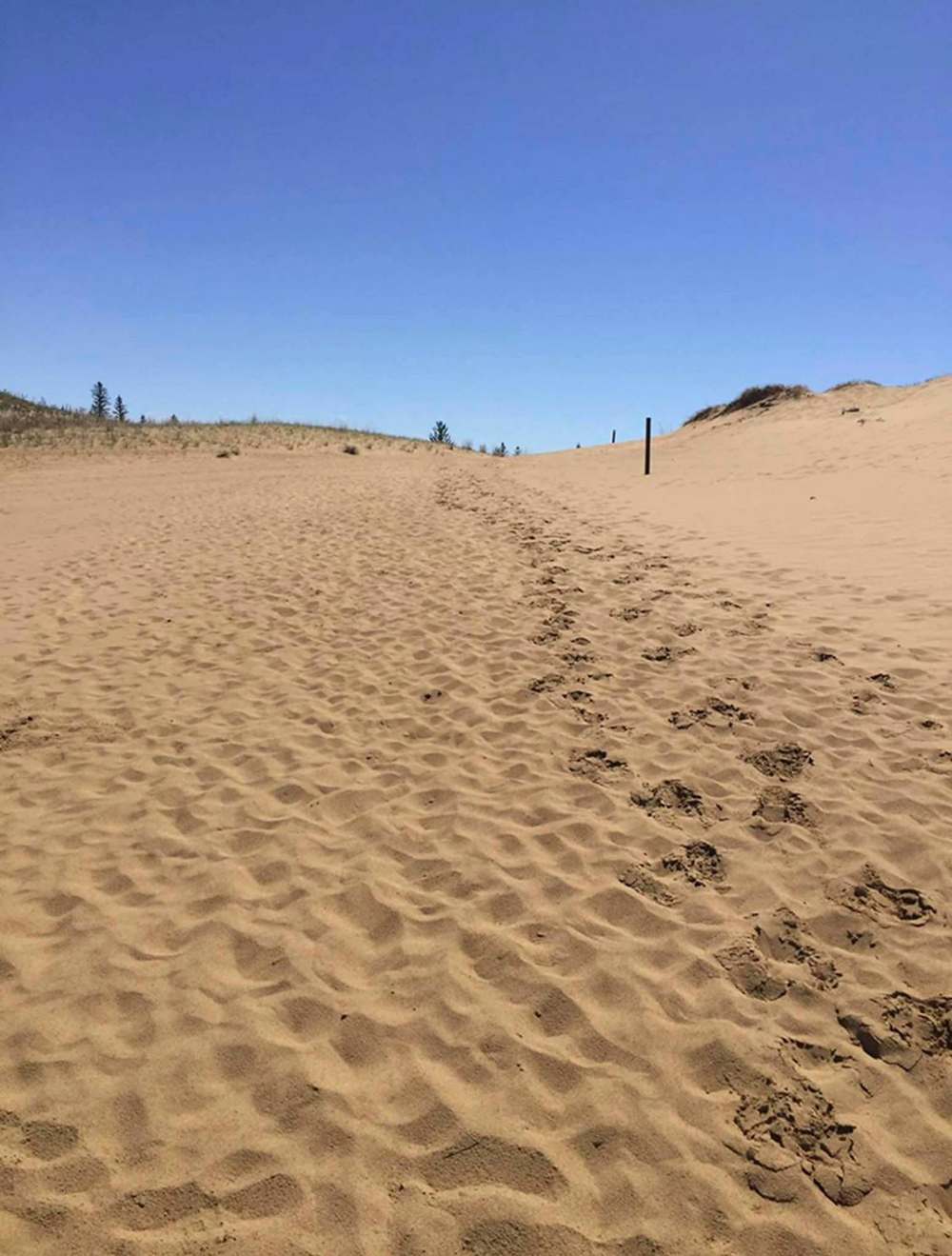Do the Dunes Lizards, cacti and the Devil's Punch Bowl set Spirit Sands apart
Read this article for free:
or
Already have an account? Log in here »
To continue reading, please subscribe:
Monthly Digital Subscription
$0 for the first 4 weeks*
- Enjoy unlimited reading on winnipegfreepress.com
- Read the E-Edition, our digital replica newspaper
- Access News Break, our award-winning app
- Play interactive puzzles
*No charge for 4 weeks then price increases to the regular rate of $19.00 plus GST every four weeks. Offer available to new and qualified returning subscribers only. Cancel any time.
Monthly Digital Subscription
$4.75/week*
- Enjoy unlimited reading on winnipegfreepress.com
- Read the E-Edition, our digital replica newspaper
- Access News Break, our award-winning app
- Play interactive puzzles
*Billed as $19 plus GST every four weeks. Cancel any time.
To continue reading, please subscribe:
Add Free Press access to your Brandon Sun subscription for only an additional
$1 for the first 4 weeks*
*Your next subscription payment will increase by $1.00 and you will be charged $16.99 plus GST for four weeks. After four weeks, your payment will increase to $23.99 plus GST every four weeks.
Read unlimited articles for free today:
or
Already have an account? Log in here »
Hey there, time traveller!
This article was published 10/08/2020 (1952 days ago), so information in it may no longer be current.
As many of us are rediscovering our home province this summer, we’re venturing to areas of Manitoba we’ve never seen or knew existed. Two hours west of Winnipeg in Spruce Woods Provincial Park, where the boreal forest meets the Assiniboine River, you’ll find a natural wonder that’s known as Manitoba’s “desert” — Spirit Sands.
This short Manitoba road trip will take you from prairie farmland to Sahara-like terrain. For a province that’s covered in snow for half the year, desert-like conditions are almost unheard of. It’s also something I had to see.
While you can take the Trans-Canada Highway to get there, I highly recommend going west along Highway 2 and travelling through small-town Manitoba to see Holland’s windmill and the glass bottle houses in Treherne. It’s a beautiful drive. Turn north on to Highway 5 at Glenboro and the Spirit Sands entrance is just past the Assiniboine River bridge.

The only sand dunes in Manitoba, the Spirit Sands are a great place to hike, photograph and explore various landscapes, particularly in the summer when there’s an abundance of berries and wildflowers. The sand dunes, steeped in local folklore, are both fascinating and delicate, as I came face-to-face with ones towering over me at 30 metres high.
While not technically a desert (due to the amount of rainfall the area gets each year) it sure looks and feels like one with massive stretches of open sand, cacti and soaring temperatures.
There are several varieties of plant and animal life that are completely unique to this area. Among them are the pincushion cactus, northern prairie skink (the only lizard species in the province) and western hognose snake. While this snake is non-poisonous, if threatened, it imitates a rattlesnake. Unfortunately (or perhaps fortunately), I saw neither on my hike.
Other animals you might spot include white-tailed deer, elk, coyotes and black bears. It’s a good idea to watch the sands carefully to see if you can spot any animal tracks along the trail.
There’s endless beauty here so I scheduled at least four hours to meander along the network of trails that wind through meadows, lush forest and desert-like dunes (including a stop for lunch and plenty of photo taking).
My companion and I packed a picnic lunch and made a day of it — nuts, cheese and crackers, protein bars and lots of water kept us both full of energy and well-hydrated for a hike under the Manitoba sun (bring at least two litres as water from the pumps is typically not drinkable).
I’d also suggest sturdy runners or hiking boots as you will get sand in your shoes. A lot of it. We had to empty ours at least three or four times.

The history of Spirit Sands goes back thousands of years. When glaciers retreated about 12,000 years ago, the Assiniboine River drained into the ancient Lake Agassiz, creating a massive delta with sand and other sediments from melting glaciers. When the waters receded, the wind sculpted the drying sand into dunes.
Of the original 6,500 square kilometres of delta sand that once spread between present-day Brandon and Portage la Prairie, only four square kilometres remain open. The rest of the modern-day sand hills are covered by grasses, junipers, spruce, wildflowers and a few cacti.
According to Prairie Public Television, the name of Manitoba’s Spirit Sands honours Indigenous peoples’ belief that the world arose from the grains of sand found in this natural geographic wonder where some sense the presence of the Great Spirit “Kiche Manitou.”
As you approach the dunes via the East Gate, sometimes referred to as the Place of Beginnings, it’s important to be aware that you’re on land considered sacred by generations of Indigenous people. The south is called the Place of Plenty, the north is the Place of Wisdom and the west is called the Place of Endings.
In earlier days, the dunes were called Montagne du Diable, which translates to Devil’s Mountain. The dunes present name — Spirit Sands — recognizes the sacred significance of the dunes to these early inhabitants.
There are marked hiking trails, shelters and washrooms along the route, and several interpretive panels that describe the history and geological forces that shaped the area. There are also log ladders that make the climb up some of the steep dune faces a little easier.

The hike is made up of a number of various loops and visitors can do their own hike distance to suit their liking, ranging from two- to 10-km routes. I hiked the full 10-km loop through the Spirit Sands to the Devil’s Punch Bowl, which I would recommend if you’re looking for a more scenic (though challenging) full day of hiking.
There are also several add-on loops and detours that are non-directional — it’s important to keep that in mind as hiking through sand is slow and tiring. It gets real hard, real fast, so I recommend hiking the dunes first and then making your way to the flatter, grassier land around the Devil’s Punch Bowl.
With several soft, sandy sections, the trails can be demanding with some level stretches and a few steeper slopes. There are various look-out points along the trail, which offer incredible views. But with two kilometres straight uphill, Spirit Sands is challenging. And once at the top, there are an additional couple of kilometres of trails, which is all sand with very few sections of firm footing.
I knew this ahead of time so I was prepared for a demanding hike, however, there’s nothing quite like hiking uphill in sand. It’s a great leg workout and requires some stamina and strength.
Once through the dunes, an offshoot of the trail leads to the Devil’s Punch Bowl, a natural, small lake fed by a groundwater spring. The trail affords a hilltop view of the Punch Bowl, a 45-metre deep depression containing a pool of blue-green water framed by spruce trees and sandy hills.
The pool is the result of underground streams eroding and collapsing on the hillside beside the Assiniboine River, creating this unique crater-shaped lake. There’s a stairway that leads to a viewing platform with benches that overlook the Punch Bowl, a perfect spot to enjoy a picnic.

After the Punch Bowl, the trail continues through mostly forested sections and loops back to the trailhead. There are fewer sandy sections along the final portion of the hike and the terrain was flatter and easier.
Some tips: we packed hats, sunglasses, sunscreen and bug spray. The dunes can feel much warmer than the forecast (on hot summer days, the sand radiates an unyielding heat), so we left early in the morning to avoid the midday heat.
I forgot binoculars but if you have a pair, bring them along to try and spot bluebirds and indigo buntings.
Even though it might be tempting to walk barefoot in the sand, it’s best to keep your shoes on when hiking as there are cacti and poison ivy in the area. And come prepared with the essentials: snacks and lots of water.
Remember, you’ll need a provincial park pass — you can purchase one online or at the Spruce Woods campground office.
Surrounded by mature spruce trees and wildflowers, this area of the province is reminiscent of a prairie landscape with a slight twist.

On the drive home, it was suggested to me to stop at the Carberry Summer Shack Drive-Inn on Third Avenue. We grabbed a couple soft serve ice cream cones and sat on the grass — a perfect way to wrap up a Manitoba day trip.
sabrinacarnevale@gmail.com
@sabrinacsays

Sabrina Carnevale is a freelance writer and communications specialist, and former reporter and broadcaster who is a health enthusiast. She writes a twice-monthly column focusing on wellness and fitness.
Our newsroom depends on a growing audience of readers to power our journalism. If you are not a paid reader, please consider becoming a subscriber.
Our newsroom depends on its audience of readers to power our journalism. Thank you for your support.









